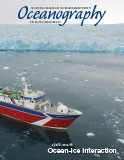First Paragraph
Myriad variables affect what and how students learn. An individual instructor has little influence over most of these variables; nevertheless, how an instructor designs a course is within his/her sphere of influence. Before we consider course design principles for enhancing student learning, I invite you to close your eyes and imagine the following scenario: You need to get to a conference where you are presenting recent research findings. How are you going to get there? How much time do you have to get there? How much of your budget will
cover transportation?

